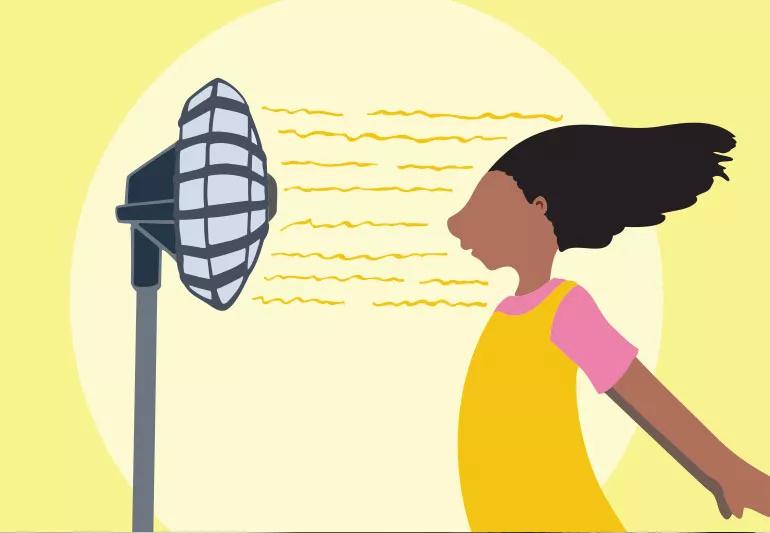Remove any extra clothing, apply a cold washcloth and move them into a cooler area

You might only associate a heat rash with babies. But hot, humid weather puts children of all ages at a higher risk of developing a heat rash, too. Some people refer to heat rash as “prickly heat.”
Advertisement
Cleveland Clinic is a non-profit academic medical center. Advertising on our site helps support our mission. We do not endorse non-Cleveland Clinic products or services. Policy
When it’s hot out, there’s an increased risk for active children to develop a heat rash, especially if they’re playing outside, overdressed for the weather or wearing clothes that don’t allow their skin to breathe. These factors may increase the amount of sweat on your child’s skin, which then increases the chance of a heat rash developing.
“Excessive sweating may cause a child’s pores, which are sweat gland ducts, to become blocked. The perspiration can then become trapped underneath the skin,” explains pediatrician Paula Sabella, MD. “This may result in skin irritation, redness and sometimes an itchy rash, known as heat rash.”
From an infant to a toddler to a child, heat rash is common, especially during warmer months. Dr. Sabella explains what to look for and how to prevent heat rash.
So, what does heat rash look like?
Children’s heat rash may look like tiny bumps surrounded by red skin. And kids may experience a prickly sensation, but it usually isn’t painful.
In infants, the rash generally develops on their neck, armpits, elbow creases and groin. In older children, it may also occur on their chest and back. Typically, a heat rash doesn’t involve the eyes, nose, mouth, palms or soles.
Advertisement
“If your child develops a heat rash, you can expect that they will act normally,” says Dr. Sabella. “A child with a heat rash shouldn’t have a fever or other signs of illness.”
If you suspect your child has a heat rash, you should start the cool down process right away. Dr. Sabella offers these tips:
“There is no need to use any lotions, oils, creams or ointments on the skin, as this could further block the pores, trap moisture and make the heat rash worse,” cautions Dr. Sabella.
A heat rash typically clears up in a few days on its own and leaves no permanent damage to the skin. And a heat rash isn’t contagious.
Blocked sweat glands cause a heat rash, so it’s important to try and stay cool and dry. Keep these factors in mind, as they may contribute to heat rash:
Remember to dress your child in a breathable fabric like cotton, which allows the air to circulate and enables the sweat to evaporate. This will keep your child’s skin cool and dry and will hopefully minimize the risk of developing a heat rash.
Typically, heat rash on babies, toddlers and children doesn’t require medical attention. But be sure to call your pediatrician if the heat rash persists, doesn’t improve in a few days, is getting worse, if you’re worried or if you see signs of infection.
Signs of infection could be in the form of:
“It’s important to seek medical care if your child has fever or signs of infection, is acting sick or has any other symptoms,” advises Dr. Sabella.
Advertisement
Learn more about our editorial process.
Advertisement

Tough times can become even tougher if they leave an itchy rash on your skin

Lifestyle adjustments like stress reduction, wearing softer clothing and staying out of the sun can help manage flares

Your provider can develop a personalized treatment plan, which may include prescription medications, antihistamines and corticosteroids

Infections, autoimmune conditions, major life changes, extreme temps and even sunlight can cause this itchy condition

The fluctuation in your hormones can cause the red, itchy welts

Combat stress and anxiety — common chronic hives triggers — by focusing on sleep, staying active and leaning on others for support

Rarely are the red, itchy welts from chronic hives connected to what you eat

Sea lice aren’t really lice, but these tiny creatures can trigger an unpleasant allergic reaction

If you’re feeling short of breath, sleep can be tough — propping yourself up or sleeping on your side may help

If you fear the unknown or find yourself needing reassurance often, you may identify with this attachment style

If you’re looking to boost your gut health, it’s better to get fiber from whole foods